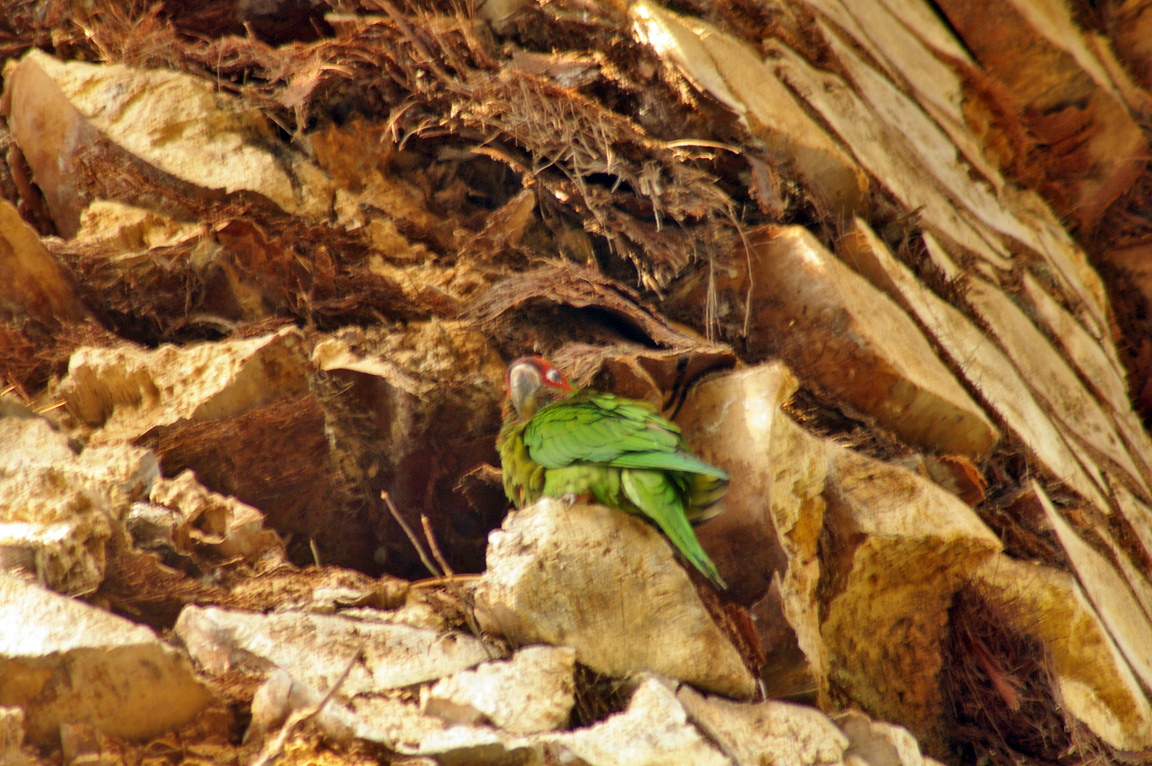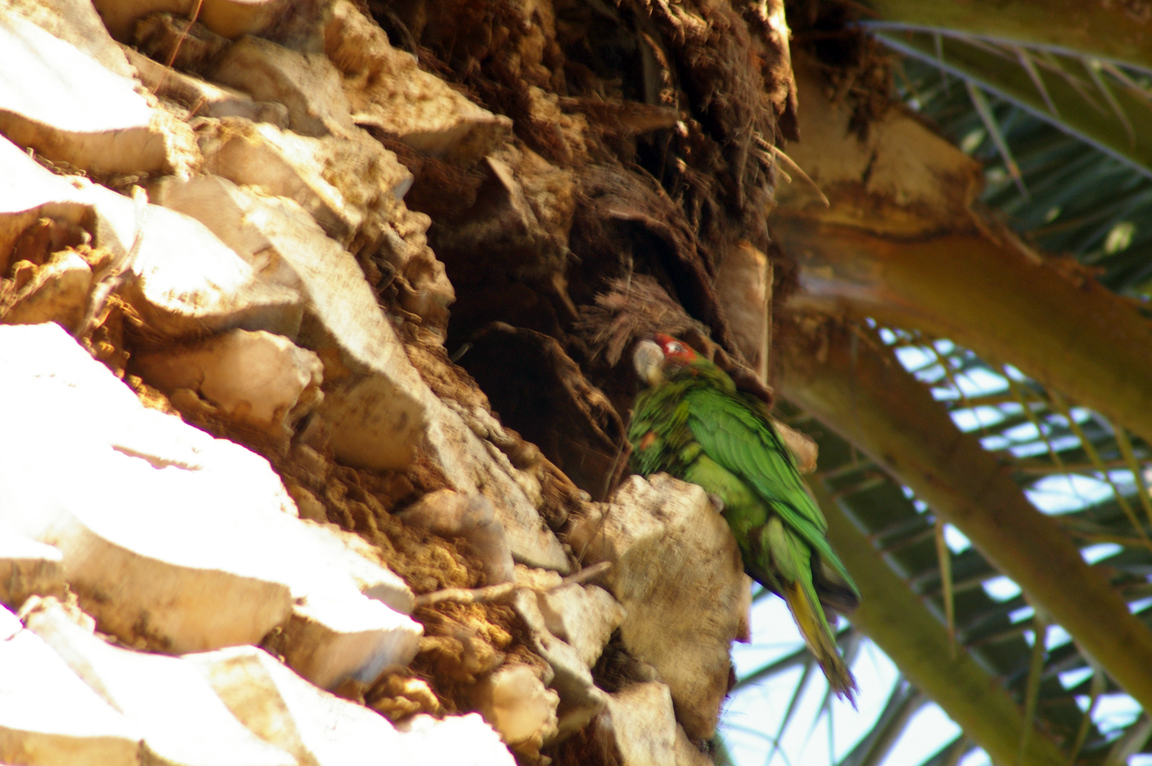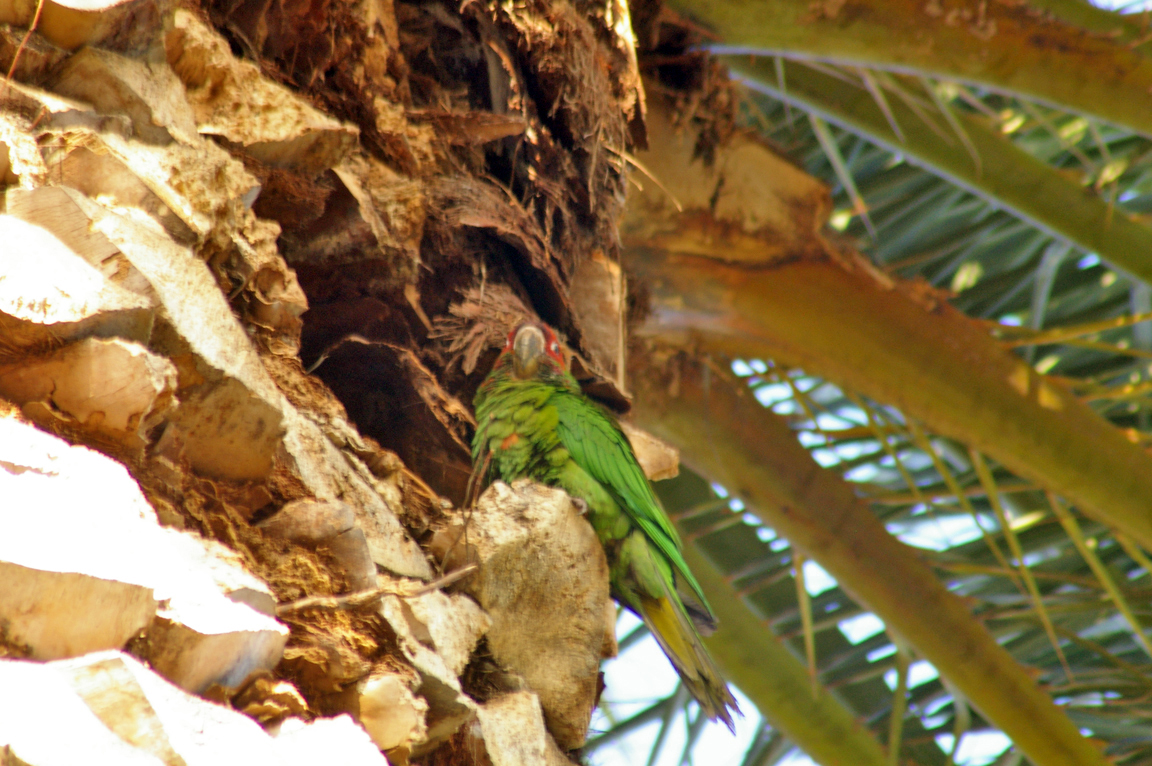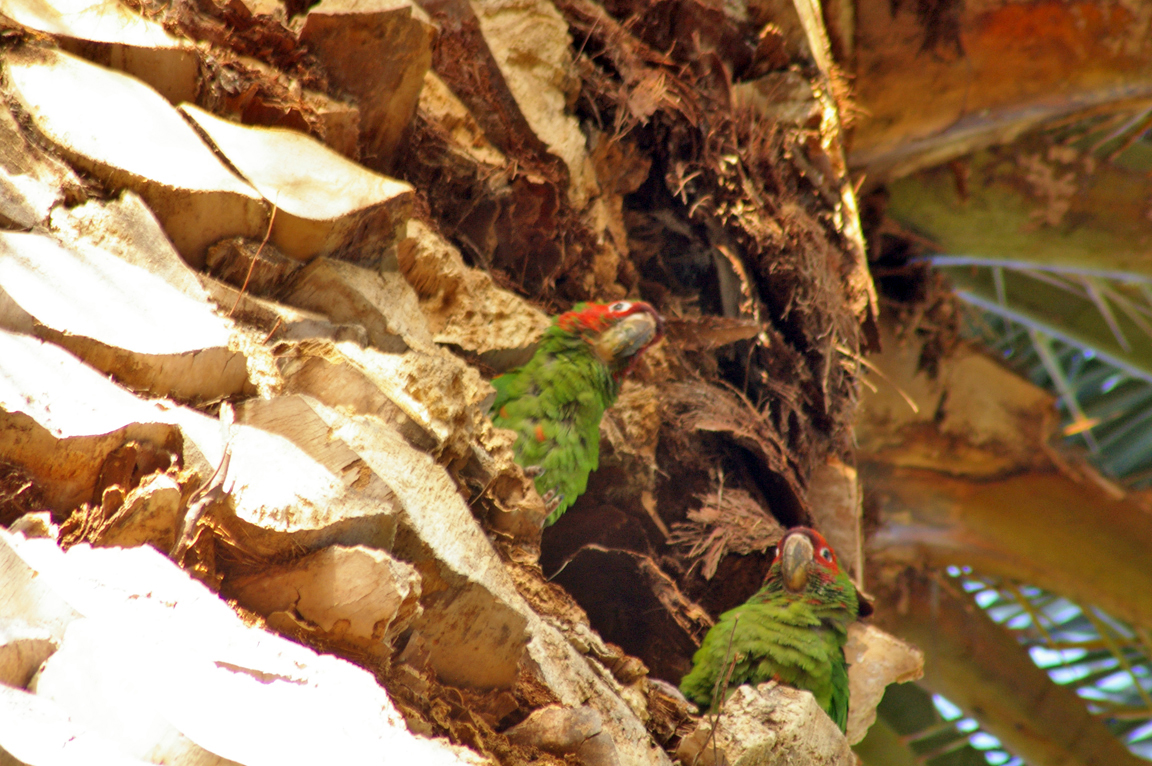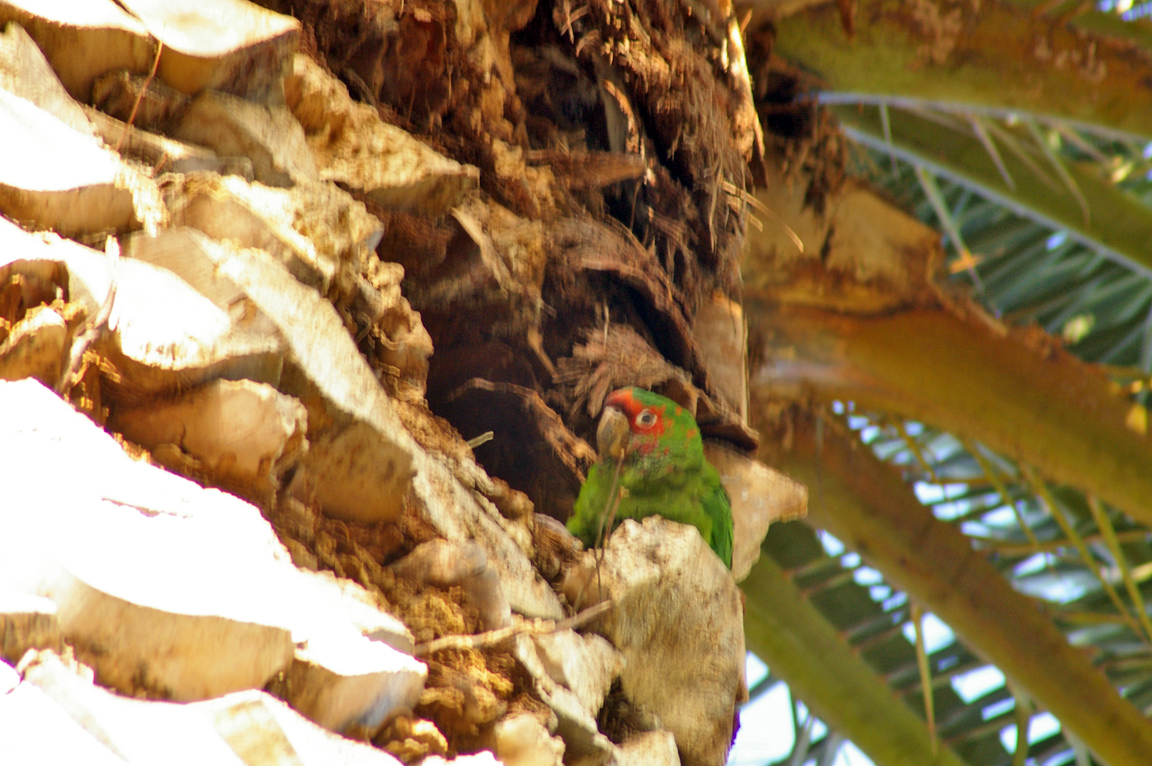|
|
|
 |
Mitred Parakeet
Introduced |
| Aratinga mitrata | |
The mitred parakeet, also known as the mitred conure in aviculture, is a species of green and red parrot in the family Psittacidae. It is native to the forests and woodlands in the Andes from north-central Peru, south through Bolivia, to north-western Argentina, with introduced populations in California, Florida and Hawaii.
Interesting Information
-
The Mitred Parakeet is social and typically seen in small flocks, but may gather in groups of up to 100 outside the breeding period. Rarely, flocks of up to 2000 may gather at roosting places.
-
The taxonomy has recently undergone significant changes with the description of two new subspecies, and the proposed elevation of the taxon alticola, traditionally considered a subspecies, to species status; the Chapman's Parakeet.
-
Popular as as pet, they are considered outgoing and playful. They are even used as "watch birds", given their loud, piercing alarm call.
-
A group of parakeets is collectively known as a "chatter" and a "flock" of parakeets.
Description
Adult Description
-
Fairly large green parakeet with red forehead grading into scattered bright red feathers on crown, face, cheek, sometimes on the bend in the wing.
-
Dull green underparts are faintly washed olive.
-
Hooked bill is dull yellow. Legs and feet are gray.
-
Length of 34-38 cm (13-15 in)
-
Weight from 6.3-8.8 oz
Green body; paler on breast and abdomen; forehead, forecrown and eye area dark red; red feathers scattered on the sides of the head, throat, nape, breast and abdomen; greater under wing-coverts as well as underside of flight and tail feathers goldish or olive-yellow; eye ring whitish; iris brownish-yellow; feet flesh-tone; beak horn-colored.
Sex Differences
Sexes Similar
Immature
Immatures as adult, but with only a red forehead. Some immatures may have barely visible signs of red.
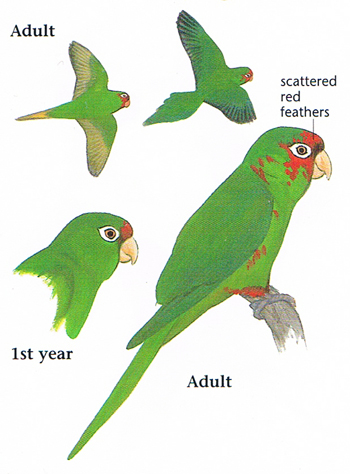
Photo taken from: The Sibley Field Guide by David Allen Sibley
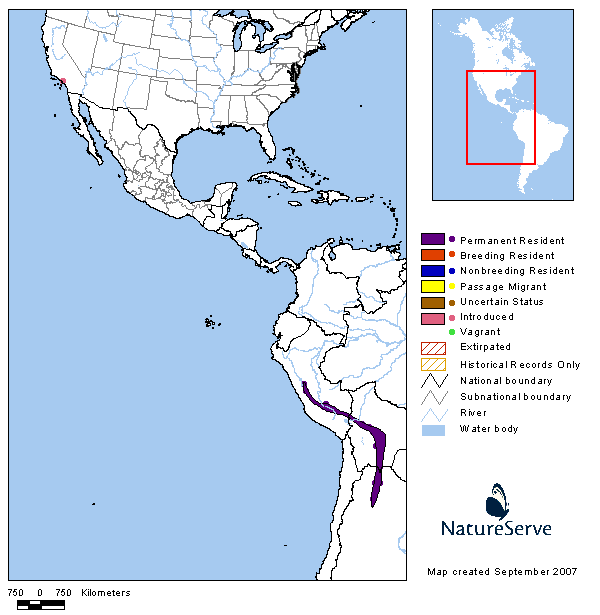
Infonatura/Natureserve and BirdPhotos.com
|
Habitat |
|
In its native range occurs in mountain valleys in a narrow band from southern Peru to northern Argentina. Populations of escaped birds also established in Los Angeles, California, and south Florida. Prefers dry subtropical forest, but also uses cultivated areas and grasslands with scattered trees. Frequently found near rocky cliffs. |
|
Behavior |
|
Travels in groups of 2 to 100 in search of fruit, berries, and nuts. Usually feeds in forests, but may visit open areas in search of grain. |
|
Food |
|
Feeds on fruits, berries and nuts. |
Taxonomy
| Kingdom: | Animalia |
| Phylum: | Chordata |
| Subphylum: | Vertebrata |
| Class: | Aves |
| Order: | Psittaciformes |
| Family: | Psittacidae |
| Subfamily: | Psittacinae |
| Genus: | Aratinga |
| Species: | Aratinga mitrata |
| Subspecies: | Aratinga mitrata alticola |
| Aratinga mitrata chlorogenys | |
| Aratinga mitrata mitrata | |
| Aratinga mitrata tucumana |
Similar Species |
|
|
Bird Sound |
|
"weee weee", "cheeah cheeah" |
|
Eggs look like this |
|
Photo taken from: ARCTOS Collaborative Collection Management Solution |
